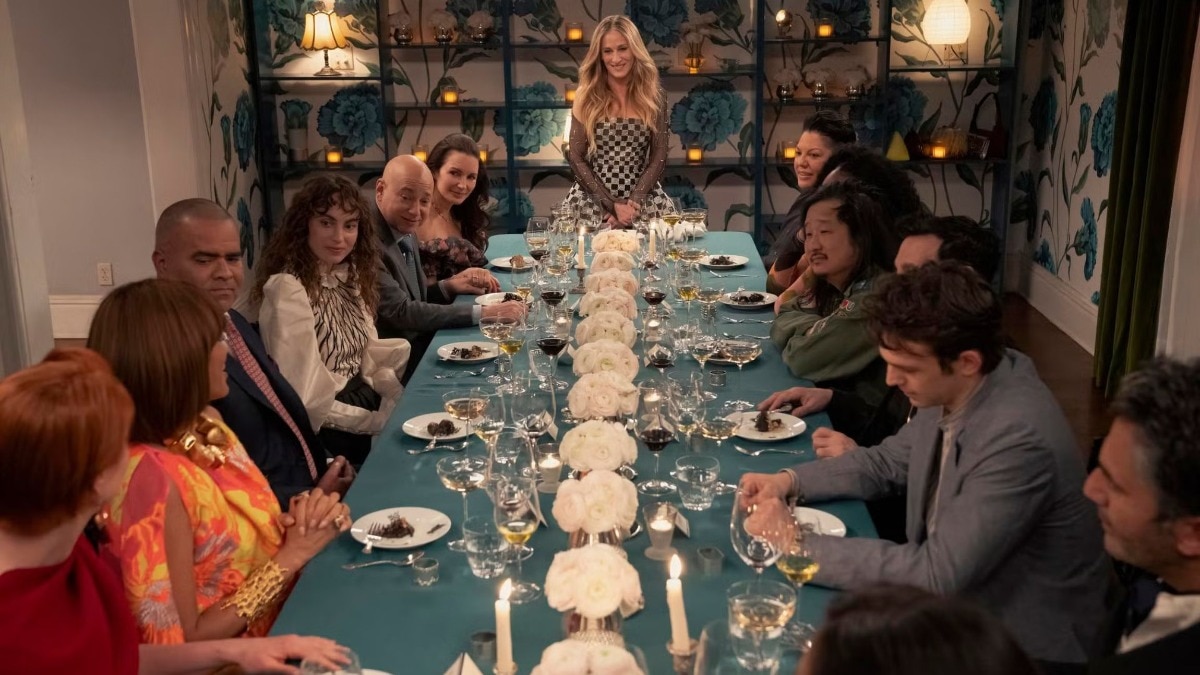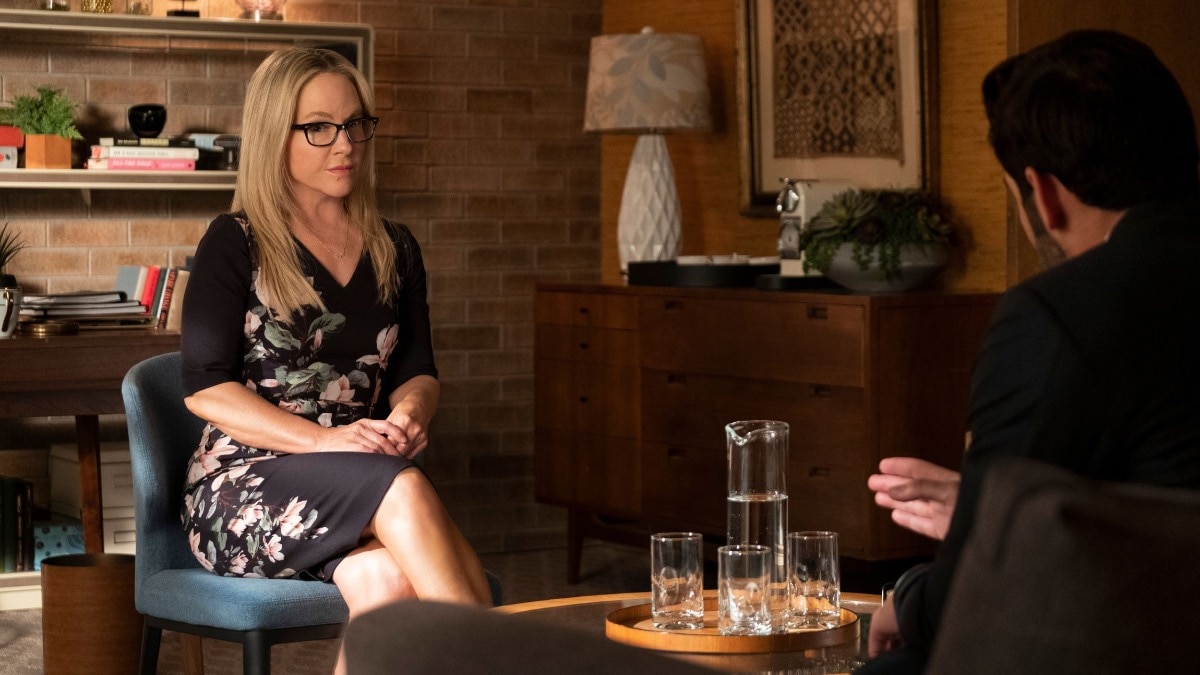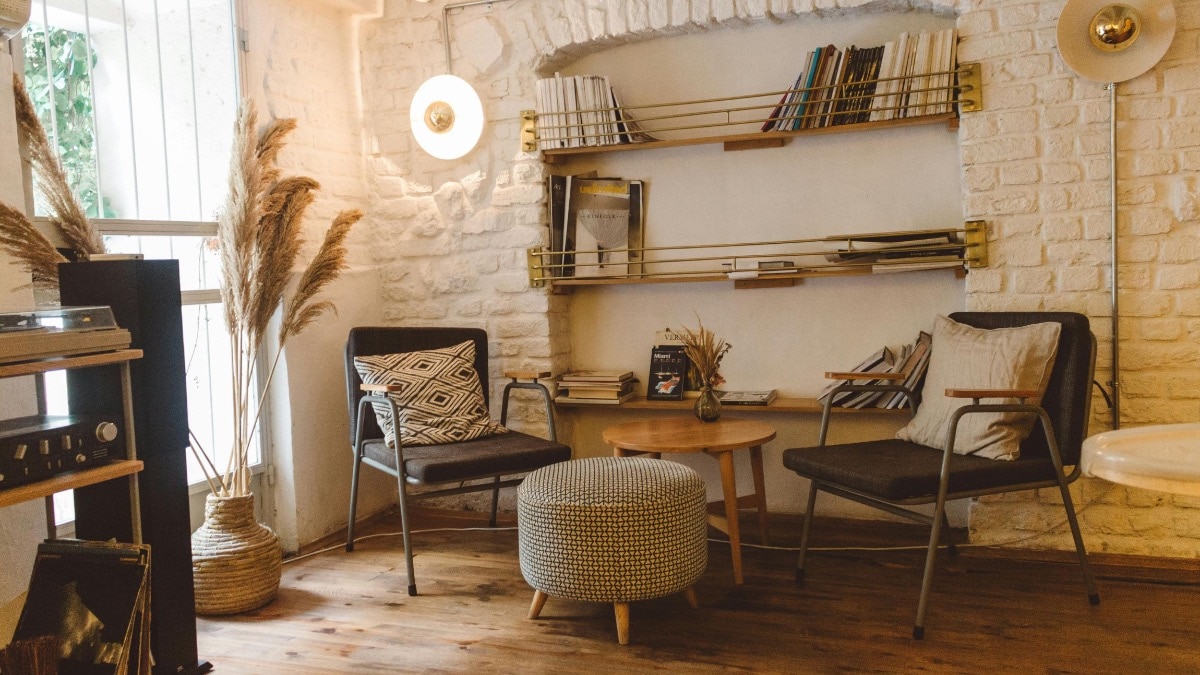
The queer awakening of 'Bridgerton'
In the current climate, seeing queer life depicted in a hugely popular Netflix drama feels like a win.


A feeling between two people, whatever their sex, is the most natural thing in the world,” says aristocrat Tilley Arnold in the third season of Bridgerton. She’s having a tender heart-to-heart with Benedict Bridgerton (Luke Thompson), one of the protagonists of the Netflix period drama, which follows various scandals in a faux-Regency fantasy world. After encountering a mysterious and handsome man with whom he shared a spark, Benedict feels tempted by the unknown.
This queer turn—which, spoiler alert, leads to several naked bodies entangled together—marks new territory for the Netflix show, which is based on the book series by Julia Quinn and was brought to our screens by Shonda Rhimes. Like many of Rhimes’s creations, such as Grey’s Anatomy or How to Get Away With Murder, the show has featured a very racially diverse cast from the start. (Bridgerton’s diversity initially sparked a backlash, with a vocal minority even review-bombing it on IMDb.) Queen Charlotte, the show’s Black monarch, has her own spin-off prequel series, which tells the origin story of how interracial relationships stopped being taboo in the Bridgerton world. But the same can’t yet be said for queer relationships, which have barely featured on the show until now.
Bridgerton is finally having a ye olde queer awakening—one that has taken a lot of campaigning from fans, and which many of its stars, such as Jonathan Bailey and Nicola Coughlan, have publicly advocated for. Normally I’d be cynical about this type of pivot, because mainstream LGBTQ+ representation can often feel like an afterthought, or worse: cringe. But I feel surprisingly hopeful here. Bridgerton might seem frivolous and silly, but in the current climate, seeing queer life sensitively depicted in a Netflix drama with such mass appeal feels like more of a win.
When Bridgerton first dropped on Netflix in December 2020, at the peak of the COVID-19 pandemic, it was the streaming platform’s most-watched show ever. It is best summed up as Gossip Girl meets Pride and Prejudice. Each season in the ton, the elite of high society mingle in the pursuit of true love and, more importantly, status. Their scandals and missteps are chronicled by “Lady Whistledown”—an anonymous gossip columnist who spills their secrets and holds them all accountable. Since the end of season one, viewers have known the identity of Whistledown: Penelope Featherington, the brilliant and often-overlooked youngest daughter played by Nicola Coughlan. Now, in season three, more of the show’s characters are learning her true identity. As she herself comes tantalisingly close to finding her elusive “love match,” inconsistencies are appearing in Penelope’s story. What could possibly go wrong?
It is undeniable that Bridgerton has been slow when it comes to LGBTQ+ representation. In the first season, there was one gay character: Henry Granville (Julian Ovenden) was an artist who was living in the closet. We didn’t know much about him, and he appeared only fleetingly. Last year, spin-off Queen Charlotte: A Bridgerton Story introduced the Bridgerton-verse’s first gay love story, but on the main show, Henry’s throwaway moment was the full extent of queer storylines.
Jess Brownell, the showrunner who took the reins from Rhimes this season, tells me she started talking about queer representation on the show “on the very first day” of season three. “It was very important for me, in a world in which we're portraying different kinds of love, to portray queer love,” she says. “As a showrunner stepping into an already established show, I felt like I had to honor the rules that were set up in seasons one and two.” (And in season one, the assumed norm was Henry, who was closeted.)
Brownell says she’d like to be able to tell an “origin story” about how the world of Bridgerton becomes more LGBTQ+-inclusive in the same way Queen Charlotte explained Bridgerton’s racial diversity. “I just felt like I couldn’t change the rules suddenly,” she says. “But that doesn’t mean that I don’t want to work toward a more inclusive fantasy.”


Bridgerton’s third season takes a bolder approach to calling out the restrictive pressures on both women and men in the faux-Regency world. We see eligible-but-sensitive bachelor Colin Bridgerton become frustrated by how men talk about women, asking his friends why they feel the need to be so lewd and chauvinistic. And Penelope’s gossip column is reframed as one of the only ways that she, a young woman, can have a voice. In a defense of her alter ego, she tells Colin that “the only choice women have is to conceal the parts of us” the world can’t yet accept.
Brownell tells me that she thinks it’s “really important” for Bridgerton to stay grounded in the gender roles of the 1800s, because it’s “the engine of the show in so many ways.” The show’s women, even those who are portrayed as villains, are eventually revealed as victims of the patriarchal system. It’s a message that, despite Bridgerton’s overwhelming heterosexuality, feels open to queer readings. “Even though there haven't been as many queer stories as I would like there to be up until now, I do think there is a queer sensibility to the show,” Brownell says. “A lot of the characters are living in a world that doesn’t quite allow them to be who they fully want to be, and I think that is something that portions of a queer audience can relate to.”
When it comes to LGBTQ+ representation, there is sometimes a justified defensiveness among queer audiences, who have become used to being erased or portrayed in ways that are tokenistic or even harmful. And often, our most intense scrutiny is reserved for LGBTQ+ public figures, who are given the (impossible!) task of being the perfect community representative for everyone. Still, with queer stories finally being told in Bridgerton’s fantasy world—one that could hardly be aimed at a more mainstream, implicitly straight audience—I’m personally finding it difficult to summon my usual skepticism.
“There is a queer sensibility to the show.”
In the last few years in the West, the public and political discourse around LGBTQ+ people and our rights has become noticeably more toxic. The so-called “culture war” has morphed into a legislative assault on LGBTQ+ people, particularly trans people, on both sides of the Atlantic. Against this backdrop, things that would have once elicited a shrug or an eye roll—like a queer throuple on a very heterosexual period drama—now feel strangely, or perhaps bleakly, reassuring.
The shift has been especially visible this Pride month.“For many years, LGBTQ+ people have been complaining about the political vapidity that now surrounds Pride,” writer Shon Faye, author of The Transgender Issue: An Argument for Justice, posted on Instagram. “Then the corporations lost interest or became afraid and their so-called ‘allyship’ fell off.” During the month of June, it’s become common for companies to be targeted by coordinated conservative backlash, with right-wing influencers proudly professing their goal to make Pride “toxic” for brands—a strategy that, sadly, hasn’t been entirely ineffective. Suddenly, enduring the corporate cringe of Target’s Pride range of products doesn’t feel like such a terrible trade-off in the grand scheme of things.
Bridgerton might seem disconnected from these real-world realities. After all, it’s a fake British fantasy land which seems to have been created largely for the gaze of Americans, where the characters jarringly flit between the Queen’s English and modern-day vernacular, with costumes often more befitting of The Hunger Games. It’s the epitome of “stuffed-crust TV.” (Tasty, but not professing to be highbrow.)
But it is Bridgerton’s sheer basic-ness (for lack of a better word) that gives me the most comfort here. If queer stories are appearing in a show that, up until now, has been so powerfully straight, that is squarely aimed at entertaining the masses and has shattered records by doing so, then surely that’s a sign that we’re still part of the furniture. And although the queer pivot was a relatively small part of season three—the show hasn’t thrown the first string quartet at Stonewall quite yet—another LGBTQ+ love story is strongly hinted at in the final moments of the finale, setting us up for a fourth season in which queer stories might be more central.
Bridgerton was slow on the uptake, but it was only a matter of time before the show became more queer. After all, this is a world where seriousness and silliness intertwine in quite a camp way, where aesthetics and gossip are a major currency. I might have been dismissive or blasé about this type of #representation not long ago. But with hostility against LGBTQ+ people escalating in the real world, to the point where mainstream support feels notably more fragile this Pride month, it’s oddly comforting that the dial seems to be shifting in the opposite direction in Netflix’s Regency fantasy land. As Brownell notes, a thread of “stepping into your authenticity and being who you really are” weaves through the show. What could be queerer than that?
All images: Netflix
This article originally appeared on hapersbazaar.com in June 2024
Also Read: Claudia Jessie is Eloise in real life too and her press tour outfit(s) are proof
Also Read: Here’s everything we’re hoping for in the second part of ‘Bridgerton’ season 3










